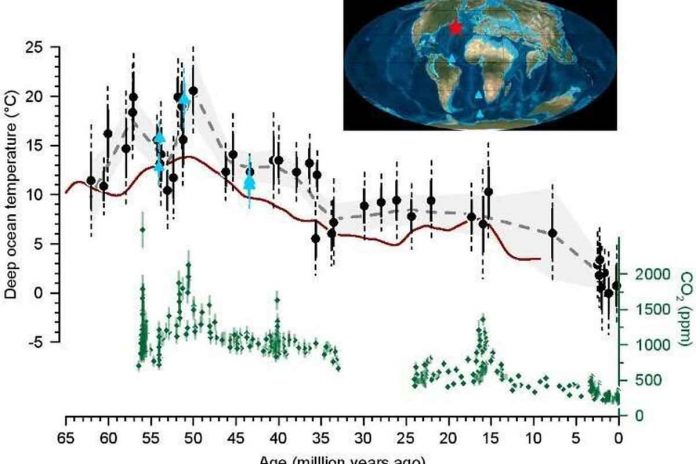A new study of ancient ocean temperatures published today in science reveals that the deep North Atlantic Ocean was once 20°C (68 °F) warmer than the modern Mediterranean surface.
Scientists say the new data, which spans the last 60 million years, demonstrate the massive impact of higher CO2 levels in the geological past and emphasise the critical need to avoid further CO2 rise in the future.
“Today, the deep ocean is filled with icy cold waters,” said co-author Dr. James Rae of the University of St Andrews, “but 50 million years ago, it was as warm as the Mediterranean is today.”
Scientists from Norway, the Netherlands, Switzerland, and the United States worked together to reconstruct ancient ocean temperatures using the chemical fingerprints of tiny fossil shells from deep-sea mud cores. They were able to obtain the most accurate temperature estimates to date using cutting-edge new laboratory measurements, indicating that temperatures were warmer—and more variable—than previously thought.
“We looked at the way that different atoms of carbon and oxygen were clumped together in these ancient shells, which turns out to be a really accurate method of working out the temperature at the time the shells were formed,” said Professor Nele Meckler of the University of Bergen, who led the study.

Dr. Phil Sexton, an Open University co-author of the study, added: “Because mud and shells accumulate on the seafloor, a long tube of this mud—up to 3 km long—acts as a time capsule. The older the fossil shells become as you go deeper into the core, and by measuring the shell chemistry, we can get a long record of past climate change.”
Temperatures of 20°C in the deep North Atlantic date from the Eocene period, roughly 15 million years after the dinosaurs died out, when atmospheric CO2 levels were roughly three times higher than today. Previous fossil indicators have shown that this time period was characterized by extremely warm temperatures, with palm trees and crocodiles inhabiting the Arctic, and the new study shows that this extreme warmth was also felt in the ocean’s depths.
“These ancient greenhouse climates may seem a long way away from today,” Dr. Rae said, “but they are critical in helping us understand the impact of CO2 on climate change.”
“Although these super-hot greenhouse climates occurred a long time ago, they are critical in helping us understand the future impact of CO2 on climate change,” he added.
CO2 has previously changed the face of our planet, and unless we reduce emissions as soon as possible, it will do so again.”

